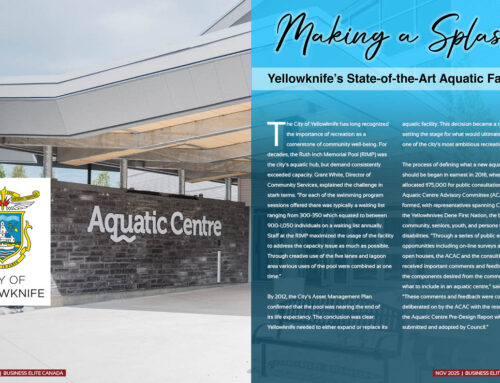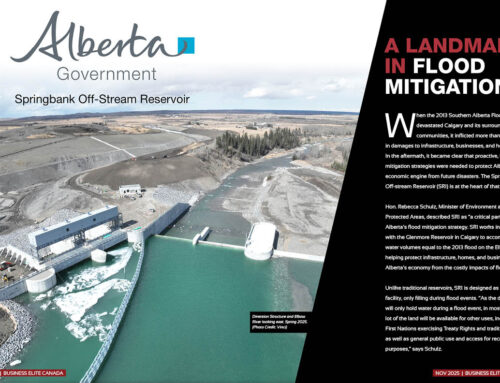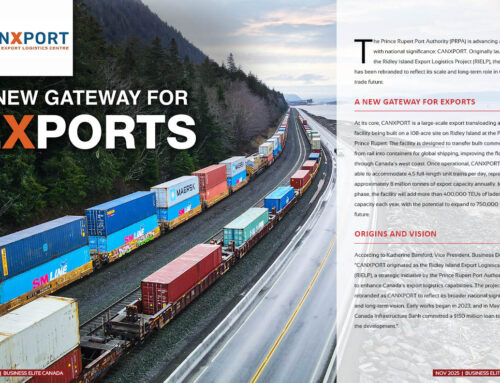Starting in the Fall of 2025, the highway 35 will provide a direct, uninterrupted link between Montreal and Interstate 89, and with a four-lane divided highway, it will be significantly more secure. Moreover, it makes cross-border trade easier and more efficient. This project is poised to improve commercial trade, enhance regional mobility, increase road security and support economic development in the province.
Nicolas Ste-Marie, director of major projects in Western Québec at Ministère des Transports et de la Mobilité durable, emphasizes the strategic significance of this long-awaited development. “Highway 35 is more than just a roadway—it’s a vital economic and logistical link that will streamline transportation for businesses and travelers alike. By completing this connection, Quebec is positioning itself as a stronger player in North American trade, facilitating the movement of goods and people with greater efficiency and security.”
A project divided into phases
The section I and II of the highway between Saint-Jean-sur-Richelieu and Saint-Sébastien was opened in 2014. Phase III began in 2020 and should be completed by the end of 2025. To date, work is progressing as planned.
The final stretch spanning approximately 9 kilometers, is the last section in linking the existing highway to Saint-Armand. From this point, Highway 35 joins Route 133, which already has two lanes in each direction on a divided roadway until the American border.
According to Ste-Marie, the economic and safety benefits are substantial. “With this highway, we’re looking at reduced travel times, improved road safety, and a more seamless connection for industries that rely on cross-border transportation. For companies in manufacturing, agriculture, and logistics, the improved route will lead to cost savings and greater competitiveness.”
The project has required extensive planning and environmental considerations. Several bridges and interchanges are being built to accommodate the region’s geography and traffic needs, ensuring that local communities continue to have efficient access to the transportation network.
A Boost for Trade and Regional Economies
Highway 35 is a key component of Quebec’s economic strategy, particularly for regions that depend on trade with the United States. The corridor serves as a major route for freight transport, linking Quebec’s manufacturing hubs to U.S. markets. Without a high-speed highway connection, trucks traveling between Montreal and Vermont must navigate a patchwork of smaller roads. And having big trucks on local roads is not ideal from a noise, vibration and safety perspective.
“The extension of Highway 35 is a game-changer for commercial transportation,” says Nesrine Boulariah, engineer in charge of this project at Ministère des Transports et de la Mobilité durable. Currently, truck drivers are forced to slow down through towns and intersections, making trips less efficient. A continuous highway will provide a direct, high-speed route that not only reduces delays but also improves fuel efficiency and lowers emissions. As a result, local towns no longer need to be surrounded by so many trucks.”
This improvement is expected to bring economic benefits to border towns and regional businesses. With easier access to major markets, small and medium-sized enterprises in the Montérégie region will be able to expand their reach and increase exports. The tourism industry is also set to gain, as American visitors will find it easier to travel to Quebec’s cultural and recreational destinations.
Infrastructure Challenges and Solutions
Building a highway extension of this scale comes with its challenges, from land acquisitions to environmental regulations. One of the key concerns has been ensuring minimal disruption to local ecosystems and farmland.
“We’ve taken a sustainable approach to construction,” explains Boulariah. “Environmental impact assessments have been a major part of our planning, and we’ve implemented measures to protect wetlands, wildlife corridors, and agricultural lands. The goal is to deliver modern infrastructure while maintaining the environmental integrity of the region.”
The project has also required innovative engineering solutions. Given the region’s varying terrain, construction teams have had to design efficient drainage systems and build resilient road surfaces to withstand Quebec’s harsh winter conditions and changing weather conditions (e.g. flooding). New bridges and overpasses are being constructed to improve traffic flow and accommodate future population growth.
Commitment to the Environment
The extension of Highway 35 in Quebec has been developed with a strong commitment to minimizing its environmental impact, particularly in ecologically sensitive areas. Subject to both Quebec’s Environmental Quality Act and the Canadian Environmental Assessment Act, the project follows strict environmental guidelines. To counterbalance its effects on the surrounding environment, the Quebec government has implemented a comprehensive environmental compensation plan in the municipalities of Pike River and Saint-Armand, near the Rivière aux Brochets.
The compensation project covers 130 hectares of government-owned land within the wetland area of the Rivière aux Brochets. Of this land, 23 hectares are being returned to agriculture, while 107 hectares of forested and agricultural lands will be preserved. One of the primary environmental measures involves creating new fish habitats spanning over four hectares, with more than 2.2 hectares specifically designed to support fish spawning. To achieve this, hand-shaped ponds have been excavated in flood-prone areas and connected to the river, providing breeding grounds that adapt to seasonal water levels and temperatures—modifications that not only support aquatic life but also help restore lost ecological functions such as water filtration and retention.
Wetland restoration is another key to the ecosystem-based approach, which considers the complex interactions between different plant and animal species to ensure long-term ecological balance. At least one hectare of wetlands will be recreated to provide essential habitats for wildlife, including nesting boxes for birds, sunbathing platforms and nesting sites for turtles, and shelters for snakes. The project also includes an ambitious reforestation effort, with 24.5 hectares of forest being restored through the planting of 35,000 trees.
The reforestation process began in 2020 and is expected to be completed by 2025. A research team from the Université du Québec à Montréal (UQAM) is overseeing the project, monitoring tree survival rates over a ten-year period to assess the success of different species and planting strategies. Additionally, over 75 hectares of ecologically valuable forested land near the project site will be permanently preserved.
Through these measures, the Quebec government aims to mitigate the environmental impact of the Highway 35 extension while enhancing local ecosystems. The combination of fish habitat creation, wetland restoration, reforestation, and land conservation will ensure that the project balances infrastructure development with environmental responsibility.
A Future-Oriented Transportation Network
Beyond the immediate benefits, the Highway 35 extension aligns with Quebec’s broader vision for an interconnected and efficient transportation network. The project supports both provincial and federal initiatives aimed at modernizing infrastructure and enhancing trade relationships with the United States.
“This isn’t just about today’s traffic,” Ste-Marie points out. “We’re thinking about the future—how Quebec’s economy will grow, how travel patterns will evolve, and how we can make transportation more sustainable. By investing in strategic infrastructure now, we’re ensuring that businesses and residents benefit for decades to come.”
As Ste-Marie puts it, “This project represents progress in every sense—economic, logistical, and environmental. We’re building more than a highway; we’re building opportunity.”
The completion of Highway 35 marks a major milestone for Quebec’s transportation infrastructure, reinforcing its role as a key gateway to the U.S. market. With benefits extending across multiple industries and communities, the project is set to leave a lasting impact on the province’s economy and connectivity and most of all, improve security for all travelers.
For more information, please visit www.Québec.ca/autoroute35
Photo credit for all images in this article: Ministère des Transports et de la Mobilité Durable.






